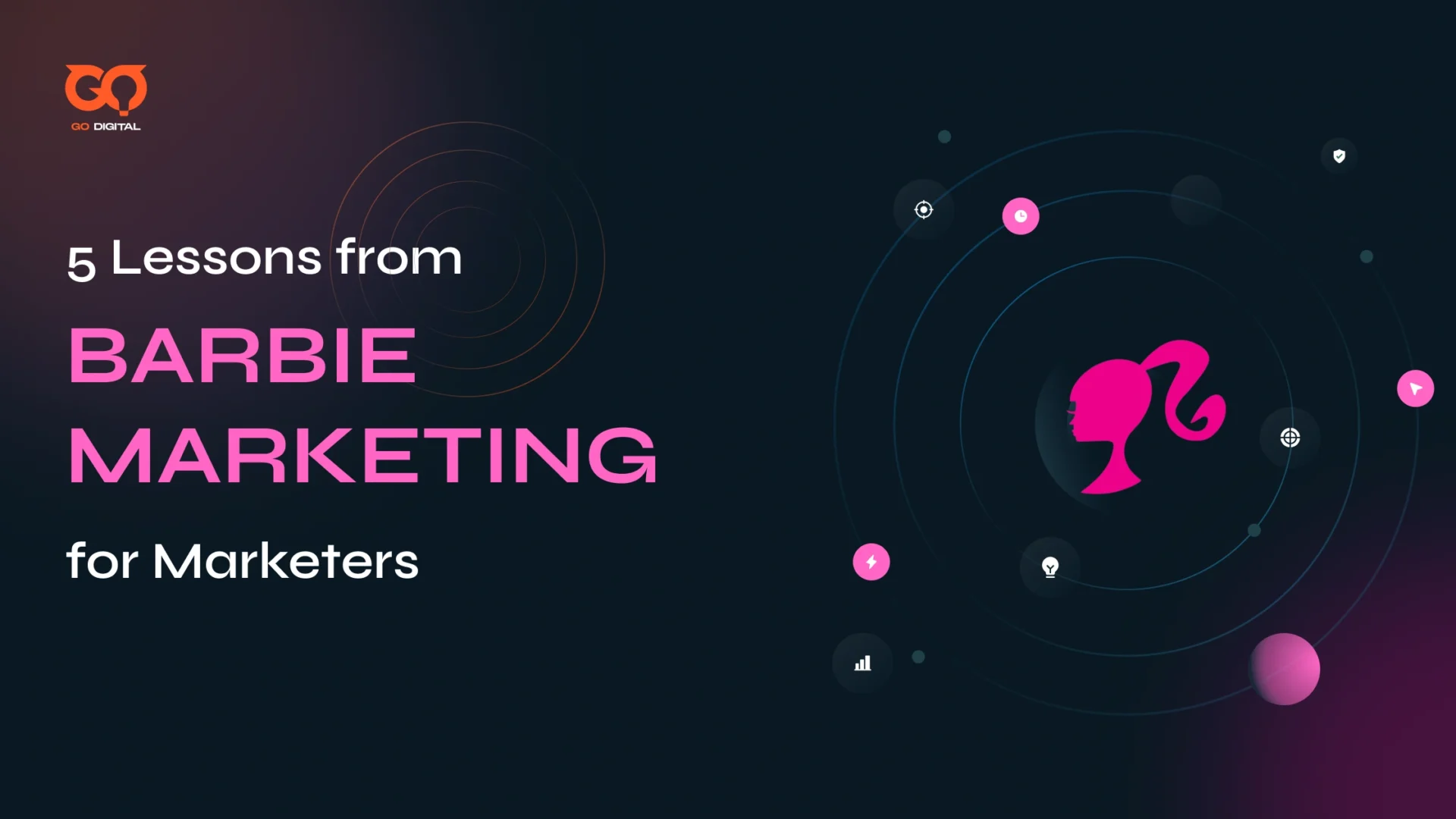Let’s be honest: when was the last time you saw the entire world go wild over the color pink? Barbie’s 2023 campaign didn’t just push a movie—it hijacked pop culture, social media, and even your favorite coffee shop, all while teaching marketers five magnetic lessons about relevance, nostalgia, and the power of a shared story.
This isn’t the usual “here’s what worked” analysis. It’s a peek behind the velvet rope of a brand that went from toy shelf to global movement—all in technicolor.
How Has Barbie’s Marketing Strategy Evolved Over Time?
Barbie’s evolution is more than just a style glow-up—it’s a masterclass in branding, reinvention, and listening to the world.

The Early Years: Fashion-First and Fiercely Aspirational
Barbie hit the scene in 1959 as the original “it girl”—a tiny fashion model with Audrey Hepburn vibes and outfits that screamed 60s glam. Right from the start, she was never just a toy. She was something to aspire to: glamour, creativity, a bit of fantasy.
As time went on, Barbie turned into a blank canvas for high fashion and imagination. Designers went wild dressing her in everything from Dior evening gowns to outlandish Met Gala-level looks. Even today, put her in a room, and she’s still the style queen.
Barbie Becomes…Well, Anyone
But Barbie’s real magic isn’t just the wardrobe—it’s the message. She’s showed up as an astronaut, doctor, firefighter, teacher, presidential candidate (yup, way ahead of the times)—basically, anyone a kid could imagine becoming. Every new career move was a nudge to kids everywhere: you’re allowed to dream crazy big.
Facing the Critics & Flipping the Script
It wasn’t all pink convertibles. For decades, Barbie’s impossible proportions became a cultural punchline and a problem—sparking real conversations about unrealistic beauty ideals and body image issues.
Instead of dodging criticism, Mattel listened.
They evolved Barbie’s look and message to match a more inclusive, empowering version of beauty:
- Broader range of body types and ethnicities
- More realistic proportions
- Dozens of new career paths (not just “model” and “movie star”)
Barbie’s Message Today: You Can Be Anything
With modern campaigns like “You Can Be Anything,” Barbie became more than a doll. She stands for possibility, empowerment, and self-expression—for girls, boys, and honestly, anyone who ever felt too “different” for the mainstream.
It’s More Than a Movie: How Barbie Paint the Plain World in Bright Pink (Again)
Let’s be honest—summer 2023 didn’t just have a Barbie movie. It had a Barbie event. The day the film landed, the world didn’t just change color—it practically drowned in hot pink. And I loved every second.
Margot Robbie stepped into those legendary heels, Greta Gerwig made it smart and subversive, and suddenly Barbie wasn’t just breaking the box office (over a billion dollars—seriously!)—she was everywhere. But none of it was by accident. This was one of the best-orchestrated marketing campaigns I’ve ever watched, and here’s what actually played out.
The Pink Tsunami: Teasers, Trailers, and TikTok
Before the first ticket was even sold, Barbie had already won the culture war:
-
Teaser trailers had everyone laughing—wry, self-aware, and totally irresistible.
-
“Barbiecore” swept through TikTok and Instagram months ahead, turning every feed into a pastel pink runway.
-
Suddenly, pink was cool again. Even the most “serious” brands couldn’t help but hop on the hype train for a limited-edition Barbie collab.
Nostalgia, But Make It FOMO
Here’s the genius: this campaign wasn’t just for kids.
Old fans felt their 90s childhoods yanked back, but teens and twenty-somethings got drawn in by the clever memes and the sense that, if you missed out—you were missing out on a cultural moment.
Barbie in Real Life (No Dollhouse Required)
This is where it really leveled up. Barbie reached out through:
-
Fashion collabs with Zara, Gap, and even high-end designers.
-
Beauty brand tie-ins (think: Barbie pink lipstick, everywhere).
-
The Malibu Dreamhouse—yes, you could book it on Airbnb!
-
Life-sized Barbie boxes popping up at events so anyone could “become” the doll.
Barbie stopped being just a toy. For a few weeks, she was a lifestyle—and honestly, it was impossible not to get swept up.
The Big Lesson?
When you pull off a campaign this massive, it’s not just about selling tickets. You’re selling a feeling. You turn the world pink, and suddenly, the whole planet wants in.
That’s how you take a simple movie release and make it the conversation. That’s how Barbie didn’t just tell a story—she made everyone want to be part of it.
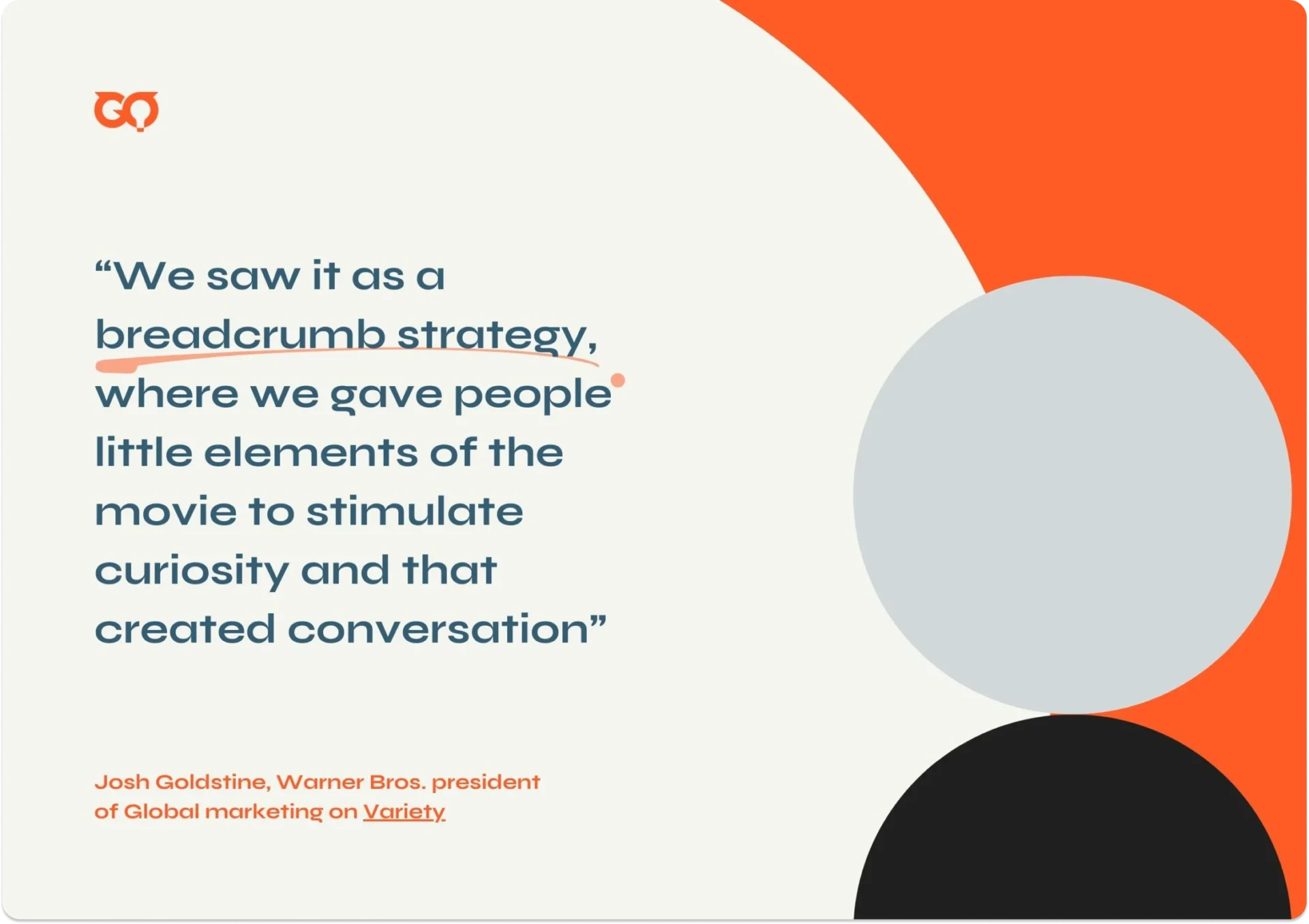
5 Tactics Marketers Can Steal From Barbie Marketing Campaign
The Barbie 2023 marketing campaign made the world sit up, notice, and go absolutely pink for weeks. From nostalgia to memes, immersive experiences to multi-layer global brand takeovers, the campaign’s success is still getting marketers dissecting it today.
And, of course, it gave us some valuable lessons in the process.
1. Cross-Platform Blitz: Ubiquitous, But Never Overkill
The Barbie marketing team executed a campaign that was everywhere—but in a way that felt like a delightful surprise at every corner, not an eye-roll-inducing spam fest.
TikTok, Instagram, billboards, late-night TV spots—Barbie was popping up across all channels, creating a tidal wave of excitement. By seamlessly blending traditional media with digital, they reached every demographic, from kids making TikTok dances to adults feeling a tug of 90s nostalgia.
Lesson for marketers: Build a multichannel strategy, but stay authentic throughout.
You don’t have to choose between platforms. Go multi-channel, but be strategic about making each platform’s content and hold a balance, since you don’t want to overwhelm people, but you do want to be omnipresent. Smart integration between traditional and digital channels ensures you reach every corner of your audience.
2. Nostalgia, But Make It Trendy
Barbie is iconic, and Mattel knew just how to capitalize on that nostalgia. Millennials were hit right in the feels with childhood memories of playing with their plastic best friend. Meanwhile, Gen Z was lured in with trendy content, memes, and vibrant aesthetics.
It was a perfect balance of old-school charm and new-age relevance that worked on multiple generations at once.
The movie’s aesthetic—a mix of old-school Barbie Dreamhouse vibes with 2020s irony—resonated with millennials who grew up playing with Barbie, while Gen Z got in on the fun thanks to the viral moments it spawned. The marketing team cleverly navigated the delicate balance between being retro and futuristic
What marketers can learn here: Lean into nostalgia.
If your brand has a history, use it. Nostalgia is powerful, but it can’t carry a campaign on its own. You’ve got to balance it with modern relevance to make sure your brand appeals to a broad audience, from the old fans to the new ones.
No history? No problem. Every company has an origin story, and that can be just as powerful as a long heritage. People love to know the “why” behind your brand’s creation. If you’re new, emphasize why the brand exists and what drove its creation—whether that’s a founder’s passion or solving an unmet need in the market.
3. The Collaboration Masterstroke
Talk about partnerships on steroids. Barbie 2023 collaborated with…literally everyone: Zara, Airbnb (with the Malibu Dreamhouse), Forever 21, Stanley cups, Xbox pink handles, Nyx makeup lines, and even an exclusive line of pink Crocs.
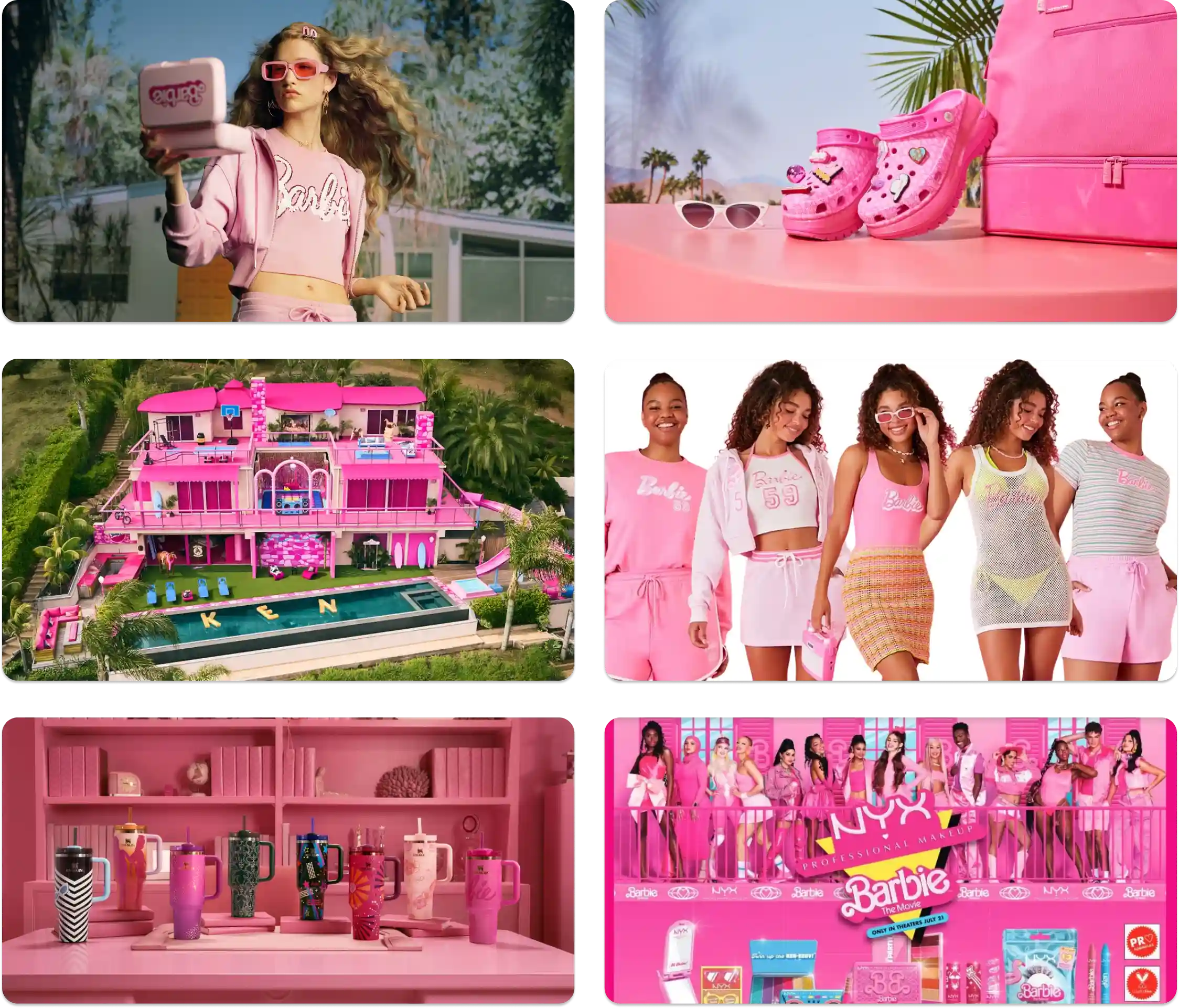
Product placement is one thing; but the key point is about turning Barbie into a lifestyle brand that aims to set up a whole new culture. By working with companies in fashion, beauty, and even food (yes, there was a Barbie ice cream), they kept the campaign fresh and broadened its reach.
Takeaway for your branding: Choose your partners, and choose them wisely.
Collaborations can be goldmines if done right, so make sure collaborations enhance your brand, not just clutter it. The Barbie campaign chose partners that made sense, both aesthetically and commercially, allowing the brand to extend into lifestyle products without feeling forced.
Therefore, it may take time, but spend it to find partners that align with your brand values and extend your reach into new, but complementary, markets.
4. Events That Brought Barbie to Life
Sure, in-person events are old-school, but the Barbie team pulled them off with a modern twist. Pop-up Barbie Dreamhouses, Barbie-themed parties, and even a life-sized Barbie box you could take selfies in created an immersive experience.
These events were catnip for influencers, who shared their pink-saturated experiences all over social media, turning Barbie into a massive, user-generated content engine.
What we can learn: Create experiences, not just ads.
Barbie’s success shows that people crave experiences, not just ads. When crafting a campaign, think about how you can invite your audience into an immersive world. Whether it’s a virtual event, an interactive app, or a pop-up shop, creating experiences that go beyond the screen leaves a lasting impression and drives more authentic engagement.
5. Social Media Buzz: Organic + Influencer Power
You can’t create a global phenomenon without winning the social media gamification, and Barbie’s marketing team aced it.
Leveraging influencer marketing and a viral “Barbie selfie generator” that lets fans place themselves in a Barbie movie poster, the campaign racked up billions of views across platforms.
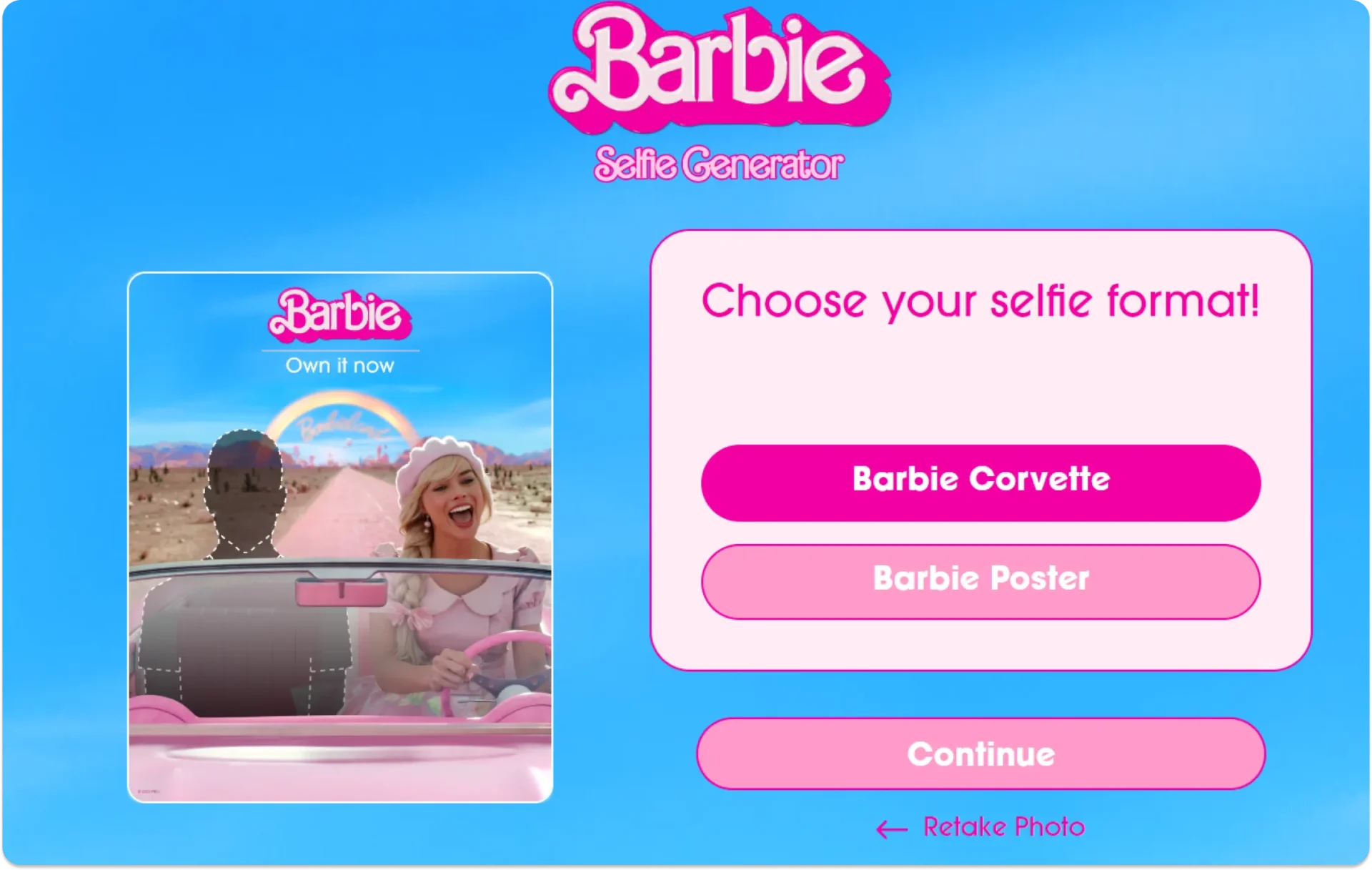
TikTok trends? Check.
Instagram takeovers? Check.
Everyone love it? Absolutely, check!
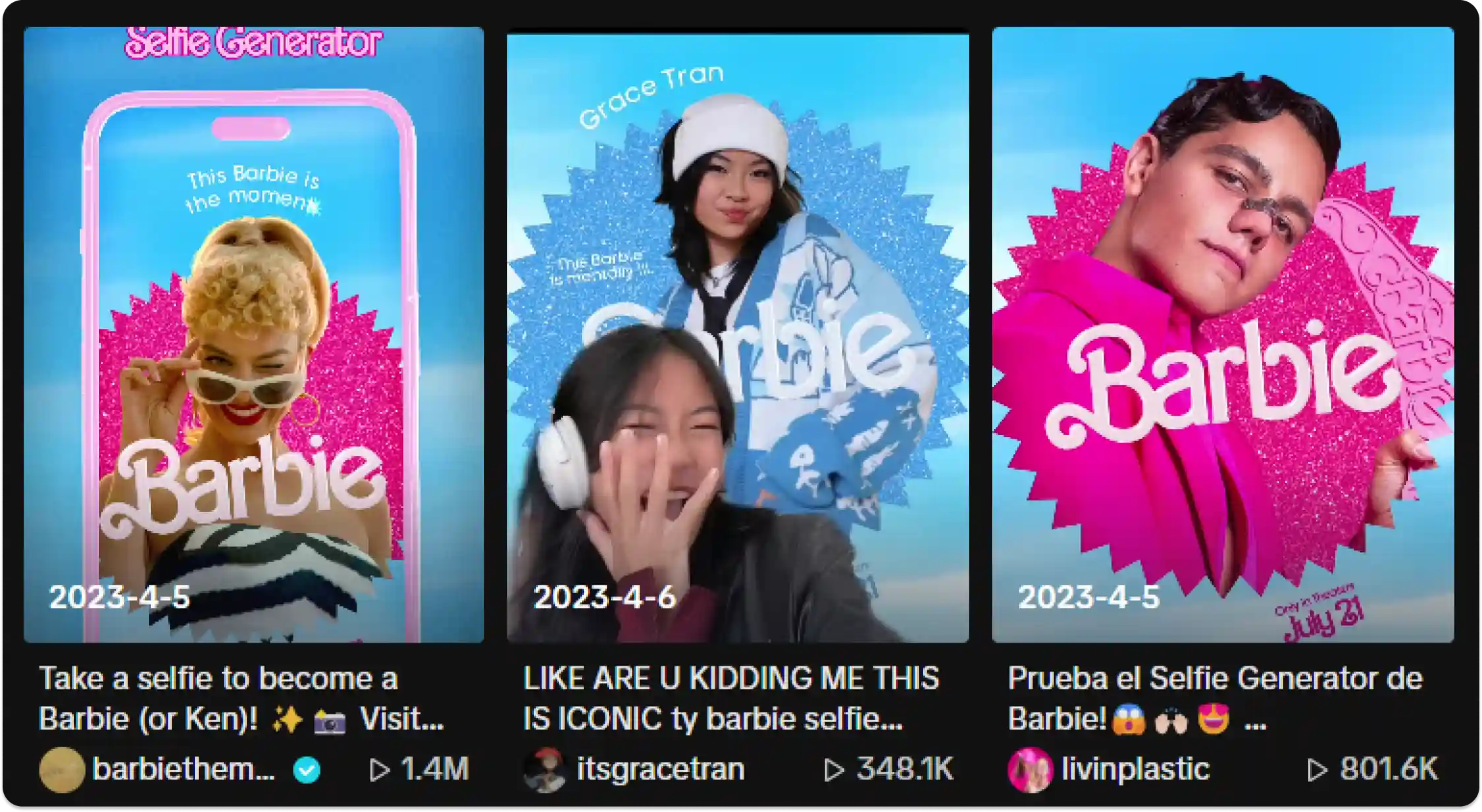
What marketers should do: Create shareable experiences.
People love to share cool, unique experiences about themselves. Naturally, allow them to do so, make it easy for your audience to create and share content! It can be digital tools like Barbie’s selfie generator or physical pop-up events, give your audience something they can talk about and share. Bonus points if it’s visually appealing, like, say… hot-pink everything.
The Impact
By the time the movie hit theaters, the marketing campaign didn’t just drive ticket sales (though $1 billion in box office numbers certainly helps make the case).
It sparked cultural conversations about femininity, empowerment, and even what it means to live in a Barbie World. From “Barbiecore” fashion trends to think pieces on the doll’s evolving message, the campaign redefined how we see the brand—and reminded the world that: Barbie isn’t just a toy, she’s a movement, and everybody is moved by her!
Closing Thoughts
As a child, I cherished Barbie, but I never imagined I would connect with her in such a profound, “grown-up” way. Her image has always been tied to childhood nostalgia—full of sweetness and innocence. Fast forward to today, and it’s fascinating to see how Barbie’s marketing has pivoted to welcome her back into our adult lives.
I hope this article has provided valuable insights for marketers looking to resonate with their audience and implement effective tactics for success in branding. After all, in a world where connections matter more than ever, understanding how to tap into nostalgia and emotional engagement can make all the difference in crafting a memorable brand story.


